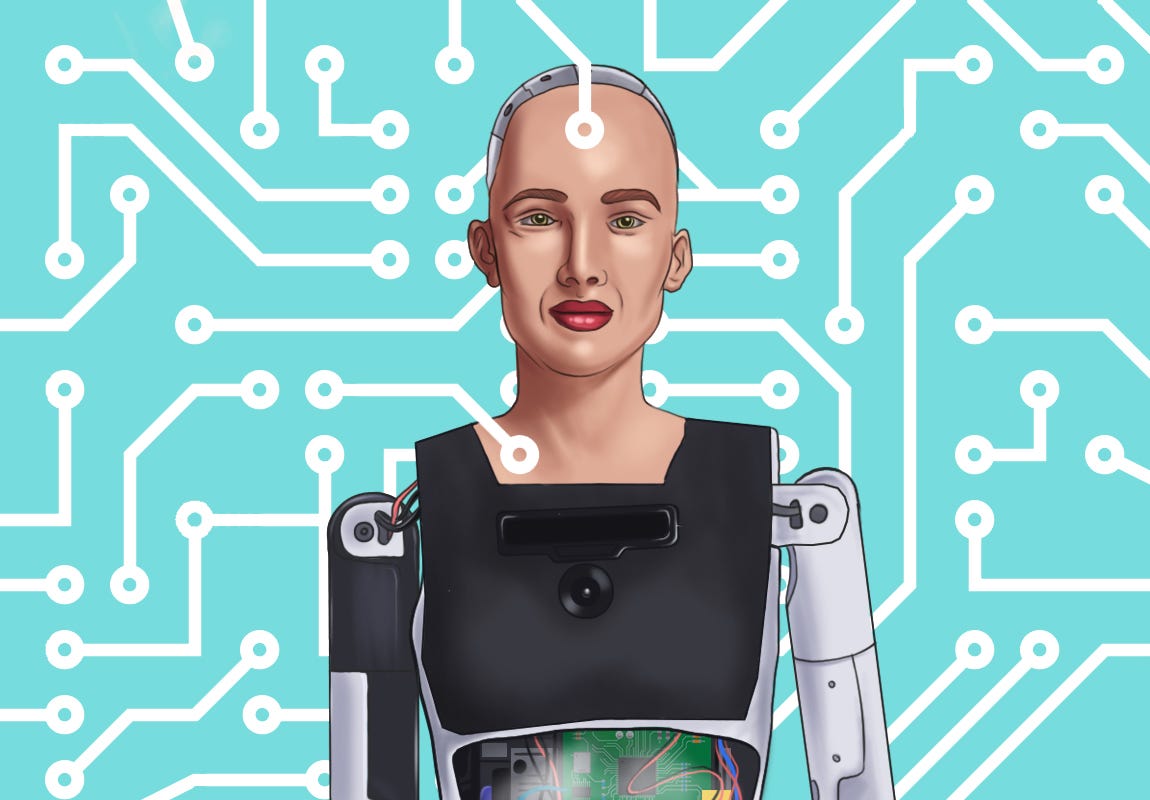You may be familiar with the 2004 Will Smith movie I, Robot. The movie's story revolves around a world where robots try to enslave humans. Many big-budget films and novels have created stories about human-like machines that wreak havoc on Earth. Robots, speaking, moving, and behaving like humans, were a fairy tale a few decades back. But today, with the emergence of artificial intelligence (AI), robots are no more a fantasy. Alexa, Siri, Cortana, Google Assistance, and several other voice assistance AIs have already become part of our everyday lives. So, what exactly is artificial intelligence all about? Let's take a look at the history of this life-changing innovation.
American mathematician and computer scientist John McCarthy, one of the pioneers of artificial intelligence and the one who coined the term, in his 2004 paper titled What is Artificial Intelligence?, defines AI as "...the science and engineering of making intelligent machines, especially intelligent computer programs. It is related to the similar task of using computers to understand human intelligence, but AI does not have to confine itself to biologically observable methods."
Since the creation of digital computers in the 1940s, the science community has been working on improving the programmes to create machines that could actually mimic human behaviour. The capability of digital computers to perform complex tasks like discovering proof for mathematical theorems and playing chess with proficiency was demonstrated by its creators. But when we check for the history of AI, we will land on one name: Alan Turing. The very base of artificial intelligence lies in one question he asked. Turing, a British mathematician, and logician, identified that humans use available information and reason to make decisions and solve problems; why can't machines do the same? In his 1950 paper Computing Machinery and Intelligence, Turing introduced the "Turing Test", where a human interrogator would attempt to differentiate between a computer and human text response.
An industrial robot invented by George Devol, named Ultimate, in 1961, became the first to work on a General Motors assembly line in New Jersey.
Following Turing's work, John McCarthy and computer scientist Marvin Minsky hosted the Dartmouth Summer Research Project on Artificial Intelligence (DSRPAI), the first-ever AI conference, in 1956. The first running artificial intelligence computer program, Logic Theorist, created by Allen Newell, J.C. Shaw, and Herbert Simon, was presented at the conference. The event catalysed developments in the field of artificial intelligence.
As computers became faster, cheaper, and more accessible, AI began to flourish. For example, following the DSRPAI, Newell and Simon published the General Problem Solver (GPS) algorithm. An industrial robot invented by George Devol, named Ultimate, in 1961, became the first to work on a General Motors assembly line in New Jersey. ELIZA, a program capable of problem-solving and interpreting spoken language, was developed by Joseph Weizenbaum in the late 1960s, laying the foundation for today's chatbots. McCarthy developed LISP, a language for AI programming that is still used.
The success of such programmes convinced American government agencies like the Defense Advanced Research Projects Agency (DARPA) to fund AI research at several institutions. Mark 1 Perceptron, the first computer based on a neural network that learned through trial and error, was created by Frank Rosenblatt in 1967. In the same year, Marvin Minsky and Seymour Papert published a book titled Perceptrons, which got recognised as a landmark work on neural networks.
The PROLOG programming language, developed by Alain Colmerauer, Robert Kowalski and Phillipe Roussel, was launched in 1973. PROLOG became popular among the AI community as it enabled researchers to encapsulate and logically query knowledge. During the 1980s, neural networks, which used a backpropagation algorithm to train themselves, became widely used in AI applications.
Rapid growth happened in AI technology during the 90s and 2000s. A major breakthrough came in the year 1997, when IBM's Deep Blue beat the then-world champion, Garry Kasparov, in a chess match. Speech recognition software, developed by Dragon Systems, was implemented on Windows in the same year. Sony's AIBO (Artificial Intelligence Robot), a $2,000 robotic pet dog crafted to "learn" by interacting with its environment, owners, and other AIBOs, came out in 1999. The first robot cleaner, Roomba, was created in 2002. By 2009, Google secretly developed a driverless car, which passed Nevada's self-driving test in 2014.
Voice assistant AIs got sophisticated with the competition of major technological players. 2011 was the year of Apple Siri. Soon came Alexa, from Amazon and Cortana, from Microsoft, in 2014. In 2011, IBM's system, Watson, won Jeopardy, an American quiz game show. A creation, considered a milestone in AI technology, was introduced in 2016. Hong-Kong based company Hanson Robotics stunned the world with its human-robot Sophia. Sophia is a most advanced robot that's capable of recreating facial expressions and interacting with people, just like real humans. In 2017, Sophia made headlines by becoming a full citizen of Saudi Arabia, the first robot in the world to achieve such a status.
These are all just the tip of a huge iceberg. The potential of artificial intelligence is far beyond our imaginations. From self-driving cars to robots capable of replacing doctors in operating theatres, AI is conquering almost every field. However, a fraction of the scientific community fears that AI will totally replace humans, marking an end to the human era as portrayed in the movies. Others believe they will be companions of humans, making our lives better.
Thank you for listening. Subscribe to The Scando Review on thescandoreview.com.
Happy Teaching!














Beginning of the Robotic Era: History of AI